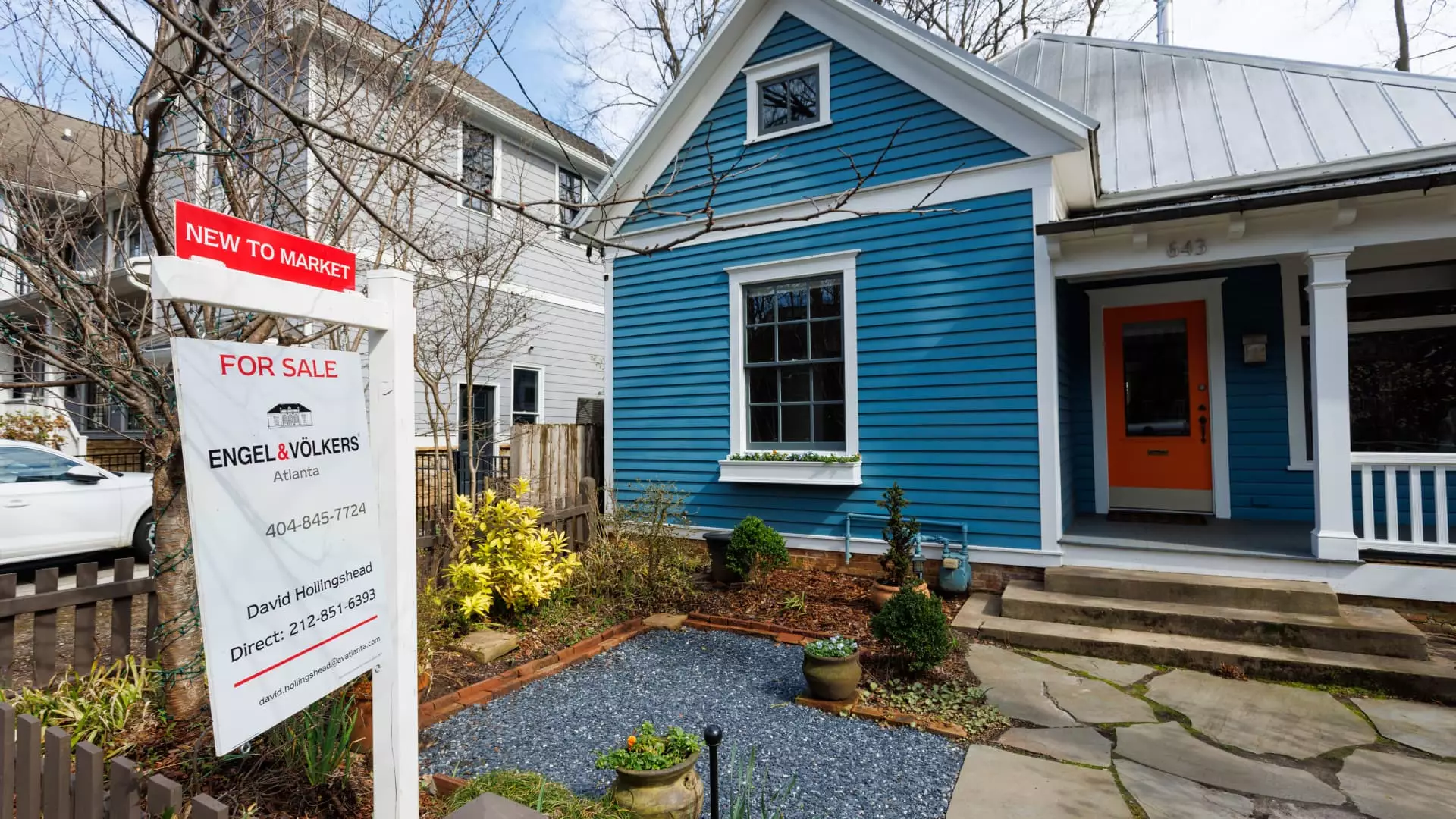In a surprising twist, sales of previously owned homes have shown a slight rebound, rising 4.2% in February, contrary to expectations of a 3% drop. The National Association of Realtors reported this increase, yet it does little to disguise the stark reality of the market’s ongoing issues. On the surface, it may appear that a wave of buyers is finally entering the market, but a closer examination reveals that we are merely witnessing a fragile uptick driven by seasonal trends, not genuine market stability.
The Disturbing Truth Behind Mortgage Rates
Despite the recent rise in sales, the shadow of high mortgage rates looms large and continues to dampen the market’s potential. Once hovering around the 7% mark, current rates in the high 6% range do not inspire confidence among prospective buyers. Lawrence Yun, the chief economist for NAR, states that buyers are slowly entering the market, yet this begs the question: Are they doing so out of necessity or genuine market enthusiasm? It feels more like a reluctant march toward a daunting purchase rather than the excitement typically associated with buying a home.
Fluctuating Inventory: A Mixed Blessing
As we dissect the dynamics of inventory, the picture becomes even murkier. While the inventory of homes has indeed increased by 17% year over year to 1.24 million units, this still represents only a 3.5-month supply at the current sales pace. The consensus is troubling: experts suggest a balanced market should have at least a six-month supply. The current tight supply continues to keep prices elevated, with the median home price reaching a staggering $398,400 in February, marking a record high. The aggressive pricing strategy employed by sellers may push potential buyers further into the background, creating an unhealthy cycle of affordability challenges that affects middle and lower-income families disproportionately.
Shifts in Buyer Demographics
Another significant trend emerges when we look at the demographics of buyers entering the market. First-time buyers constituted 31% of sales in February, an increase from 26% the previous year. However, the enthusiasm of these new buyers can easily be overshadowed by the proportion of sales attributed to investors, which dropped to 16%. The trend suggests that less investor activity could be leading to stiffer competition among traditional buyers, leaving first-timers to grapple with inflated prices and limited options.
Fragile Optimism: A Dangerous Illusion
While some may view the February sales figures as a ray of hope, numerous indicators point to a market that remains fundamentally flawed. A survey from John Burns Research and Consulting implies that real estate agents themselves hold a more cynical view, with over half reporting weaker-than-normal sales this spring. This is an alarming reflection of market sentiment and suggests that the resilience showcased in sales figures may not be sustainable. Current data indicates that many potential buyers are facing insurmountable hurdles, leading to a precarious state of affairs in which optimism appears misplaced.
The current landscape is fraught with dangers that could easily tip into a deeper crisis if left unaddressed. Without substantial changes in affordability and access to housing, the economic underpinnings of our communities remain at risk. As we navigate these murky waters, the need for policy adjustments that favor working-class families over speculative investors cannot be overstated.

